 |
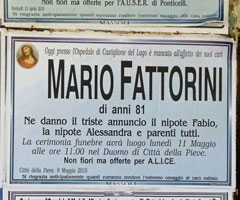 |
 |
|
||||||||
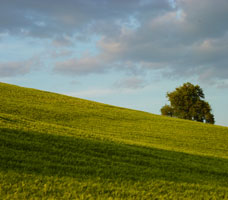 |
 |
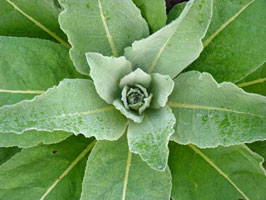 |
|||||||||
Our neighbour Mario died the other day, taking a piece of our history with him. We bought this house from him: for him it signified drudging and hardship, and he was touchingly incredulous when he saw the extent to which we had removed all signs of a subsistence past.
There’s a temptation to think, as the old contadini disappear one by one, that we are losing important pieces of country lore, but in Mario’s case – as I presume in many others – that says more about our starry-eyed view of peasant life than it does about the contadini themselves.
Mario’s lore included leaving olives on the trees until December or even January so that they swelled with water to maximise yield. It included avoiding paying for petrol (Mario was nothing if not tight-fisted) by leaving the olives in baskets for weeks until they were all gathered before taking them to the press. (Quantity not quality: the resulting oil was pretty foul.) It included chucking handfuls of chemical fertilizer on anything that wasn’t growing fast enough for his taste, and spraying without mercy.
It’s not so much the peasant knowledge that we’re losing around here but the true old-time contadino character. When we first met him in 2001, Mario’s eyes twinkled with that shrewd, dry Umbrian wit which disappeared as age and his heart condition shriveled him up. His generosity and kindness were as absolute as they were testy: mutual aid between neighbours was something you took for granted, without comment or thanks. For him, a word once given was something irremovable: from the moment we made him an offer for this house, it was ours, despite bureaucratic complications that made the purchase lengthy, despite better subsequent offers from others, and without our passing over a penny until the day we signed the contract. In Mario’s mind, there seemed to be no question that our word might be any less good than his.
Now the kind Romanian lady who looked after him in his final years has been left to mull over his death. As I am the only person who passes by the house on a regular basis, she tries out her theories on me.
First it was that the doctors neglected to give him the drugs he needed: death around here is generally the doctors’ fault. But today she had another explanation: the Romanian who had proceeded her as minder – the one who had meanly abandoned Mario – had visited Mario at the hospital, and he had been terribly distressed about it. Could she have cast the evil eye on him?
I have tried to point out that he might, perhaps, have died of old age and the complications of a chronic heart condition; that he had gone into hospital ill and that the illness had taken its course. But that’s far too banal. No, the real cause of death will certainly emerge in time; I’m expecting many more interesting theories.
It’s grey and gusty and muggy outside: what I call a Key Largo kind of day, swaying the big old olive tree outside the kitchen window to reveal the glittering grey undersides of the leaves. There’s a feeling of impending something in the air (possibly influenced by having seen big lightning zigzags over CdP on all the weather websites). It has been exceptionally warm, with only two serious rain showers in the past two months. There’s a warm scirocco blowing from the south: a distressing, disturbing wind that makes people jittery.
This is the time of year when hail shreds things. I’ve been studying my apricot tree, which has a fair amount of fruit on it this year, unlike most seasons when we’re lucky if we get any at all. I was sizing it up for possible covering with agricultural fleece. But it’s too big. What a shame it would be to lose the apricots. Not to mention the tiny tomato and bean plants, some of which are already planted out in the orto. And the peas and broad beans, which are getting close to being ready for picking.
But at least the most of roses are hardly out at all (the exception being the R. chinensis Mutabilis which are awash with blooms): anything but the most devastating of hail should bounce off buds that are still tight-folded. At least, that’s what I’m hoping.
We were in Venice last week for the vernissage of the Biennale. It’s art this year, a rather glum art that takes itself too seriously and thinks it’s a bleak, confrontational form of politics. Of course this is a wild generalisation. But after 2013’s exhilarating, challenging ‘Palazzo Enciclopedico’, this ‘All the World’s Futures’ is poetic and attractive in title alone. That said, there’s some great stuff. My comments, I should add, come from the depths of great ignorance about contemporary art, and from gut feeling.
Things I liked: the wondrous cave of red twine and dangling keys around wooden boats in the Japanese pavilion; the hilarious wacko multi-coloured junk shop with coin-roll in the Canadian pavilion; the old-curiosity-shop intricacy of the installation in the Australian pavilion (slightly marred by the account of an artist/critic who attended the inauguration who told me that the artist, Fiona Hall, hadn’t bothered to learn the names of the Aboriginal artists – present – whose works featured in her installation); the marvellous Fitzcarraldo-style video of a European troupe performing an opera in the dusty street of a Haitian village in the Polish pavilion; Herman de Vries’ quirky works in the Dutch pavilion. That’s it for the Giardini. The central pavilion left me unmoved. I don’t know whether Sarah Lucas in the UK pavilion was more dull or more silly.
It took a while in the Arsenale to find anything much that grabbed me more than the wonderful buildings themselves. But in the end I did: the watery moving walkways of the Tuvalu exhibit; a marvellous video of body and earth and dust in the South African show which also included some chilling ‘reconciliation process’ footage; the jumble of amateur carpentry exploring gender stereotypes in the Latvian show – though I admit I may have liked this because an upstairs bit allowed me to hide from an acquaintance I had spotted and didn’t want to bump into.
There was one very dark room (can’t remember whose) where you scrunched across a deep layer of scratchy clay balls and then, when your eyes grew accustomed to the gloom, you noticed four naked blokes scratching themselves: hilarious, though I’m still trying to work out if I think it’s art. Anything else? Photographs and videos mostly caught my eye.
Outside the main shows, it was the India/Pakistan ‘My East is Your West’ collaboration that most intriged, with the Pakistan half (Rashid Rana) a total delight. In one room, a large screen had people moving about on it. Only after a minute or less, I appeared. There was a time-lapse between a hidden camera filming, and that film appearing: so confusing to see yourself as you were seconds ago. In another room, a screen showed a group of Pakistani men standing about in what appeared to be a replica of the room you were in. And the men were talking to you. And waiting for your answers. They were in Lahore, they said: utterly disorientating.
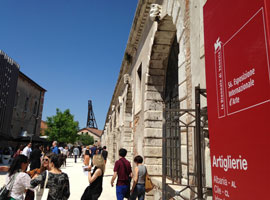 |
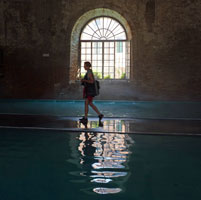 |
|
||||||
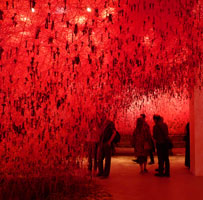 |
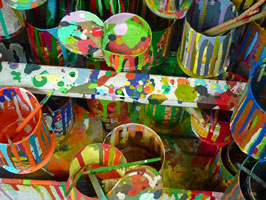 |
|||||||